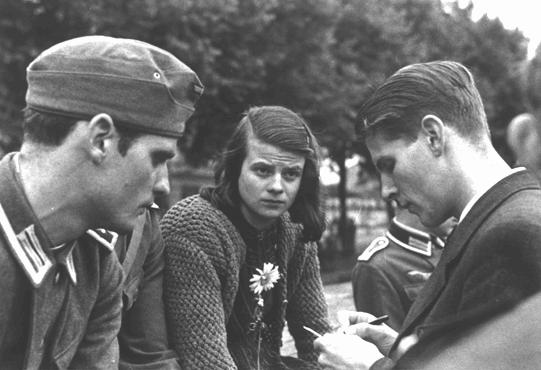The White Rose and the Definition of ‘Resistance’
Simon Henderson explains the significance of Hans and Sophie Scholl in the history of Nazi Germany.
 On February 18th 1943 Hans and Sophie Scholl threw hundreds of leaflets from the third floor of the main building in the centre of the Munich University campus. The last sentence of them read: ‘Our people stand ready to rebel against the National Socialist enslavement of Europe in a fervent breakthrough of freedom and honour’. Brother and sister were executed four days later. Along with other members of the White Rose movement, they dared to struggle against the ideological straitjacket of the Nazi police state. Remarkable and courageous young people, inspirational figures whose example of honour and integrity transcends time and place, the Scholls, alongside Christoph Probst, Willi Graf, Alex Schmorell and their Professor, Kurt Huber, boldly resisted Hitler’s regime.
On February 18th 1943 Hans and Sophie Scholl threw hundreds of leaflets from the third floor of the main building in the centre of the Munich University campus. The last sentence of them read: ‘Our people stand ready to rebel against the National Socialist enslavement of Europe in a fervent breakthrough of freedom and honour’. Brother and sister were executed four days later. Along with other members of the White Rose movement, they dared to struggle against the ideological straitjacket of the Nazi police state. Remarkable and courageous young people, inspirational figures whose example of honour and integrity transcends time and place, the Scholls, alongside Christoph Probst, Willi Graf, Alex Schmorell and their Professor, Kurt Huber, boldly resisted Hitler’s regime.





